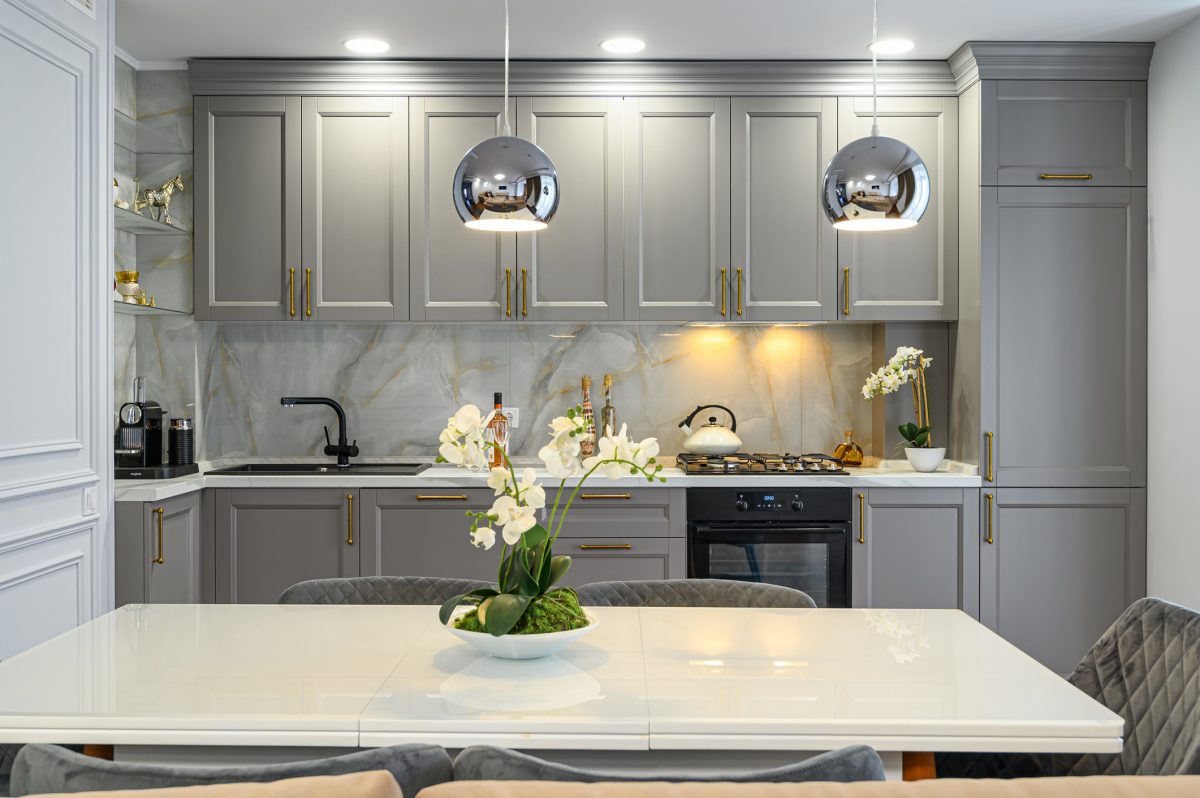When homeowners look for ways to revitalize their kitchens, one solution often stands out for its balance of cost and impact: cabinet refacing. This improvement method involves updating the cabinet doors, drawers, and hardware while leaving the cabinet frames intact. It’s a smart approach to kitchen redesign, providing a significant facelift without the costly and time-consuming need for full cabinet replacements. In this comprehensive guide, we’ll explore the top 10 reasons why cabinet refacing should be your next home investment.
1. Enhances Aesthetics
The visual impact of cabinet refacing cannot be overstated. By choosing from a plethora of finishes, materials, and styles, homeowners have the opportunity to create a kitchen that reflects their taste and complements the home’s overall design. Whether you prefer the warm tones of natural wood, the sleek look of laminate, or the durability of thermofoil, refacing can offer a complete transformation of your kitchen’s appearance.
Modern advancements also mean that the finished products are indistinguishable from brand-new cabinets, allowing you to enjoy a fresh aesthetic without the expense or hassle.
2. Cost-Effective Alternative to Replacement
Kitchen renovations are notorious for their high costs, and cabinets often account for a substantial portion of the budget. Cabinet refacing can save you up to 50% of the cost of traditional replacement, making it a budget-friendly solution for those looking to update their kitchen without breaking the bank.
By reusing your existing cabinet structures, you eliminate the need for extensive construction work and can redirect these funds toward other upgrades or savings.
3. Minimal Disruption to Home
Unlike full cabinet replacements that can take weeks to complete, refacing projects often wrap up within a matter of days. This quick turnaround means minimal disruption to your daily life. With most of the work being done off-site, the on-site time for cabinet refacing is short, allowing you to swiftly return to your kitchen and resume your normal routine.
4. Eco-Friendly Option
In an age where sustainability is a growing concern, cabinet refacing offers a greener alternative to discarding and replacing perfectly functional components of your kitchen. Refacing uses fewer natural resources and produces a fraction of the waste compared to the manufacturing, shipping, and disposal of new cabinets.
Limiting the amount of material that ends up in landfills is a small but valuable step towards a more environmentally conscious home.
5. Customization Possibilities
Every homeowner has their own needs and preferences when it comes to their kitchen, and cabinet refacing is incredibly versatile when it comes to customization. Whether you’re redesigning a small kitchen or a vast culinary space, the tailored approach of refacing allows you to tweak size, style, or finish options to fit your specific requirements.
Work with skilled professionals to explore various designs that optimize storage and work space or highlight decorative elements in your kitchen.
6. Increases Property Value
Any improvement to your home has the potential to increase its market value, and updating the kitchen is especially effective. A stylish and functional kitchen is a key selling point for any home, and refaced cabinets can make a significant impression on potential buyers.
Real estate experts frequently point to the kitchen as a top ROI area, making cabinet refacing an investment that not only enhances your living space but also adds tangible value to your property.
7. Quick and Efficient Process
Speed is often the surprise element that impresses homeowners who opt for cabinet refacing. Given that the bulk of the work takes place off-site in a controlled environment, the on-site tasks are already streamlined.
Professionals can complete the process quickly and efficiently, provided that there are no major changes to the kitchen layout.
This time-saving feature not only adds convenience but can translate into saved costs on alternative living arrangements, should displacement be necessary during a renovation.
8. Longevity and Durability
Choosing a high-quality refacing service comes with the assurance that your rejuvenated cabinets will last. New finishes and materials are selected for their durability and resistance to the common wear and tear that kitchen environments endure. With proper care, refaced cabinets can maintain their charm for decades, giving you a lasting return on your investment.
9. Improved Functionality
Cabinet refacing is about more than looks; it also presents the opportunity to enhance the functionality of your kitchen. You can choose a new cabinet style that better suits your organizational needs or add features such as rollout shelves, tilt-out trays, and pantry cabinets to improve accessibility and storage.
An improved layout and smarter storage solutions can make your kitchen a more efficient and enjoyable space to work in.
10. Variety of Style Options
Refacing offers a remarkable variety of design possibilities. From traditional to contemporary and everything in between, the array of styles available ensures that you can find the ideal aesthetic for your home. Add to this the wide selection of hardware options, and you have a nearly unmatched level of personalization that a new cabinet set might lack.
With new trends and materials constantly emerging, your refaced cabinets can stay ahead of the curve and keep your kitchen looking fresh.
Work with Desirable Kitchens and Refacing Today!
Cabinet refacing presents a multitude of advantages that make it a top choice for homeowners seeking to upgrade their kitchens. Its cost-efficiency, environmental friendliness, and customization options provide significant value and a renewed space to enjoy.
For a home investment that strikes the perfect balance between cost and impact, it’s clear that cabinet refacing is a strong contender. Whether you’re looking to sell your property or wish to enjoy a modern, efficient kitchen, the benefits speak for themselves.
In addition to considering cabinet refacing, homeowners should always research and engage with reputable providers like Desirable Kitchens and Refacing. Our professionals can guide you through the process, ensuring that every benefit of cabinet refacing is maximized for your unique situation.
Contact us today to revamp your cabinets and invest in the beauty of your home and kitchen.





